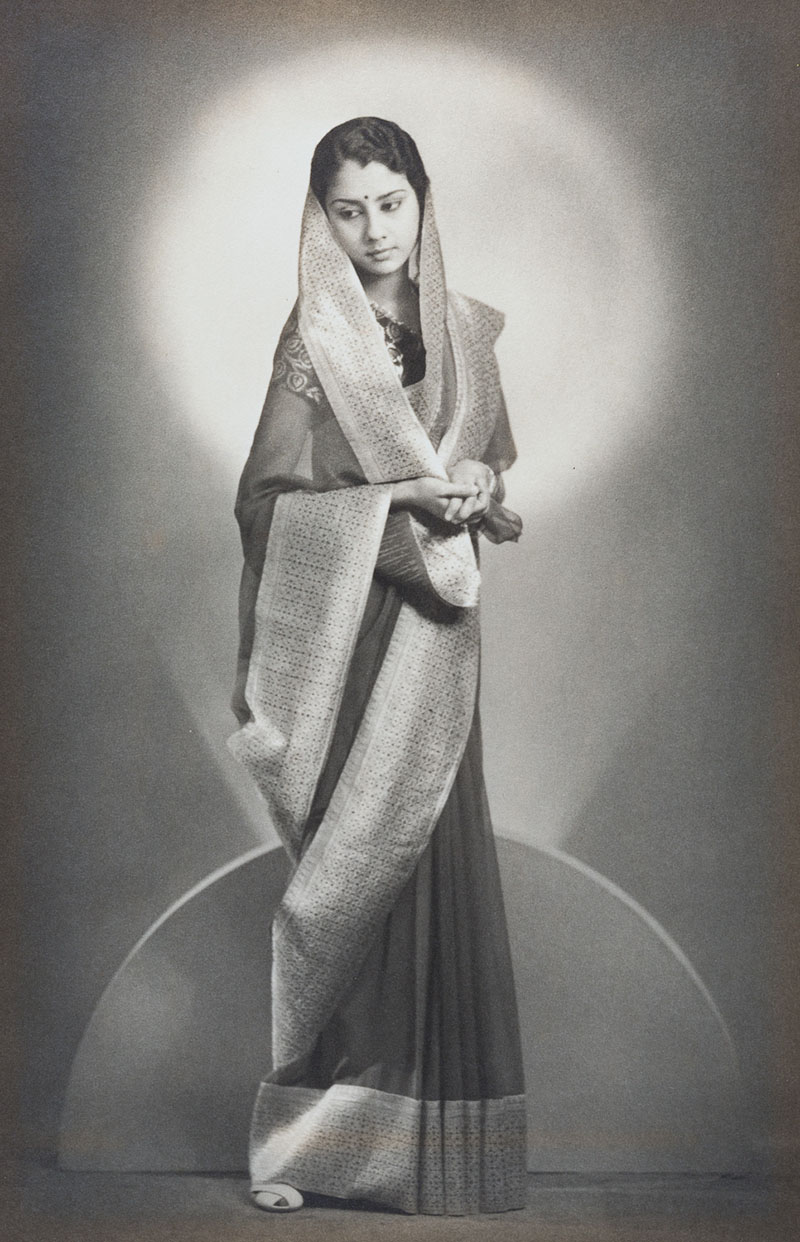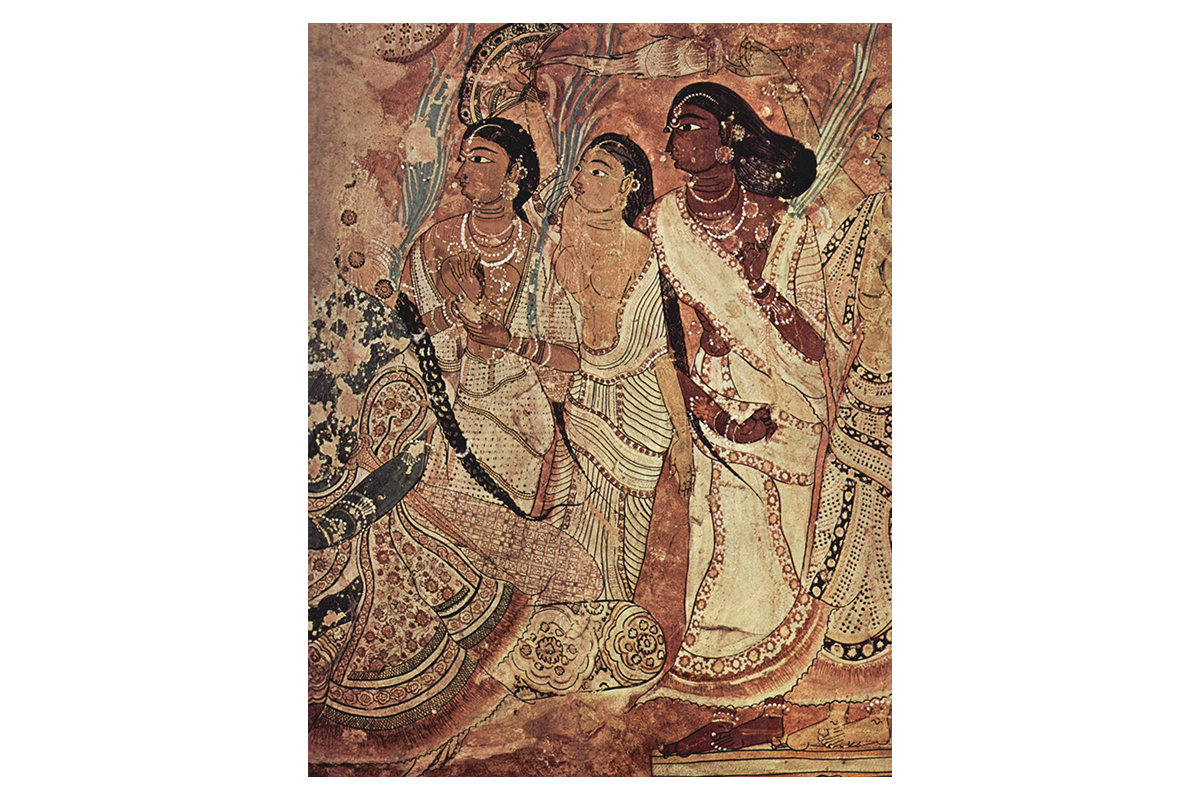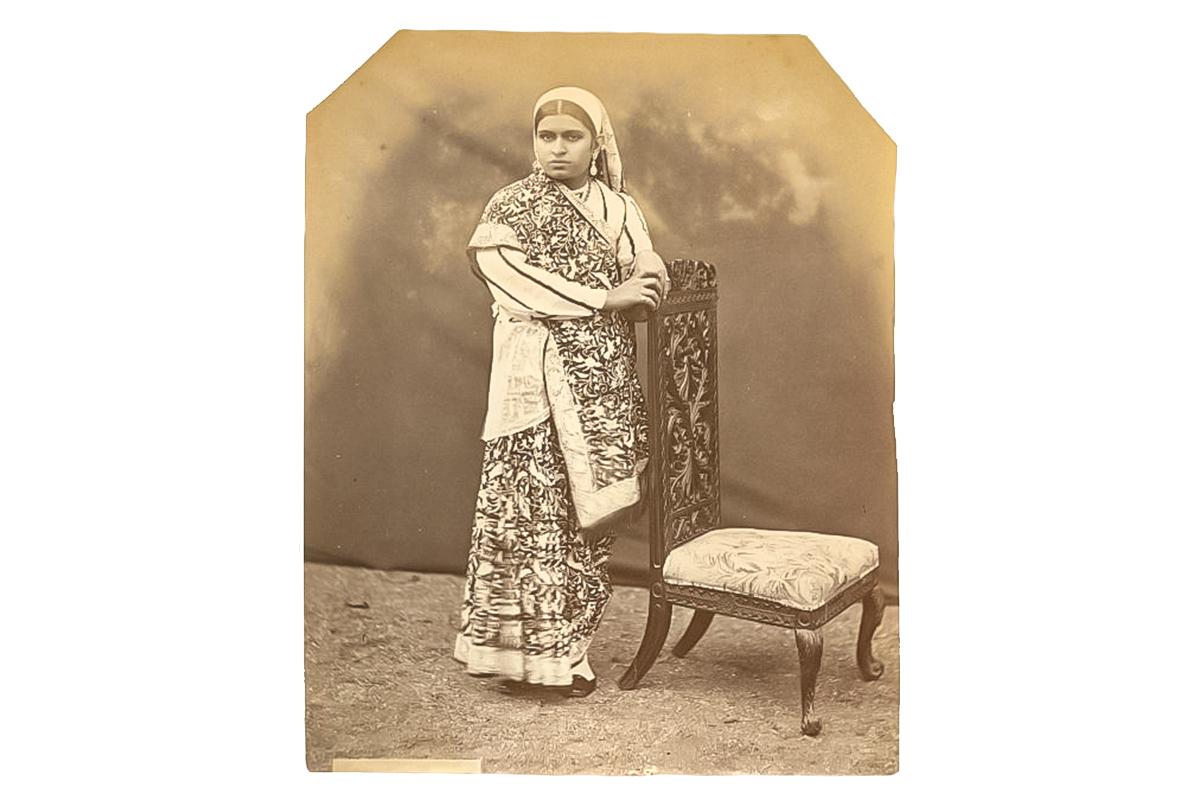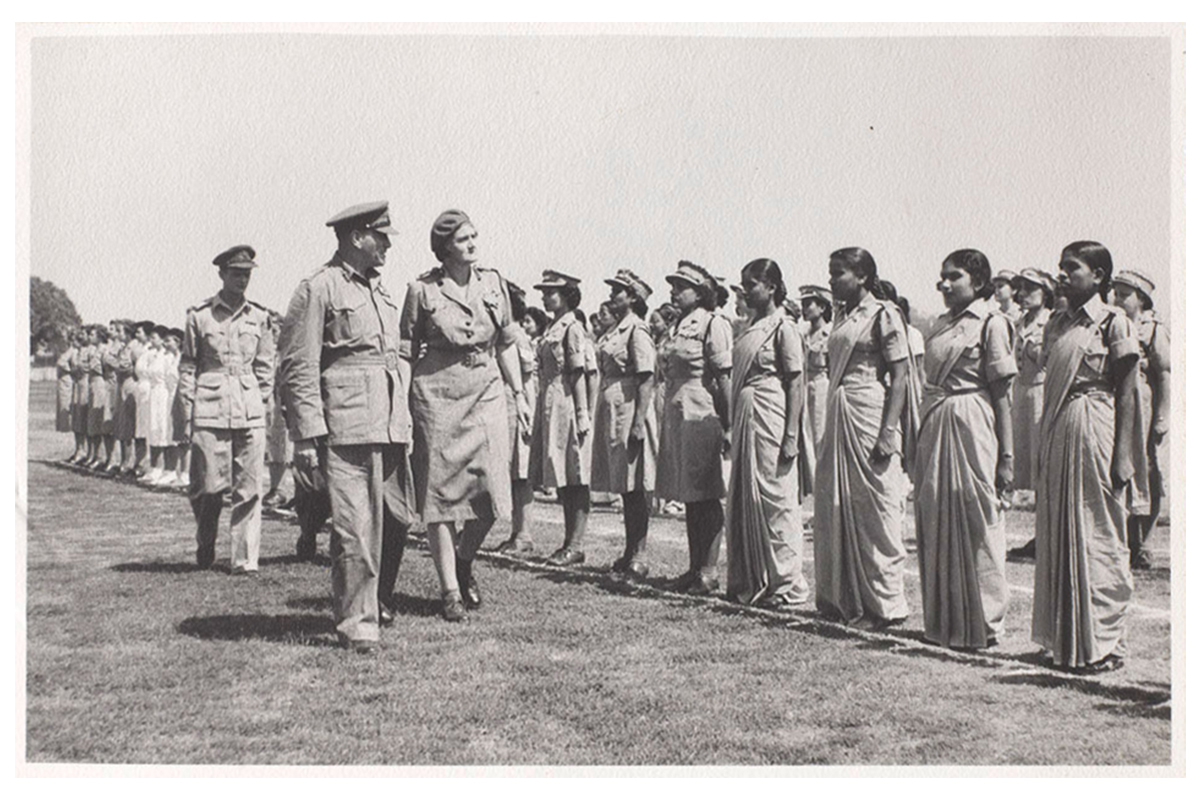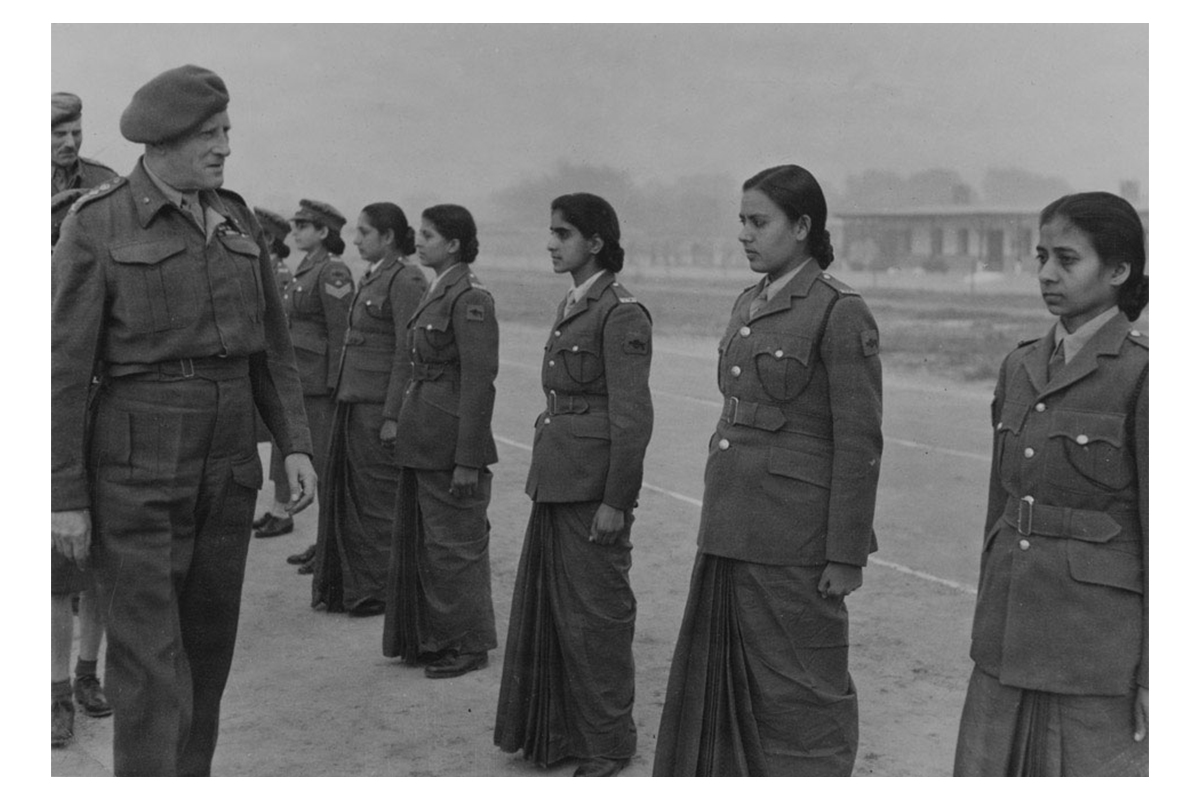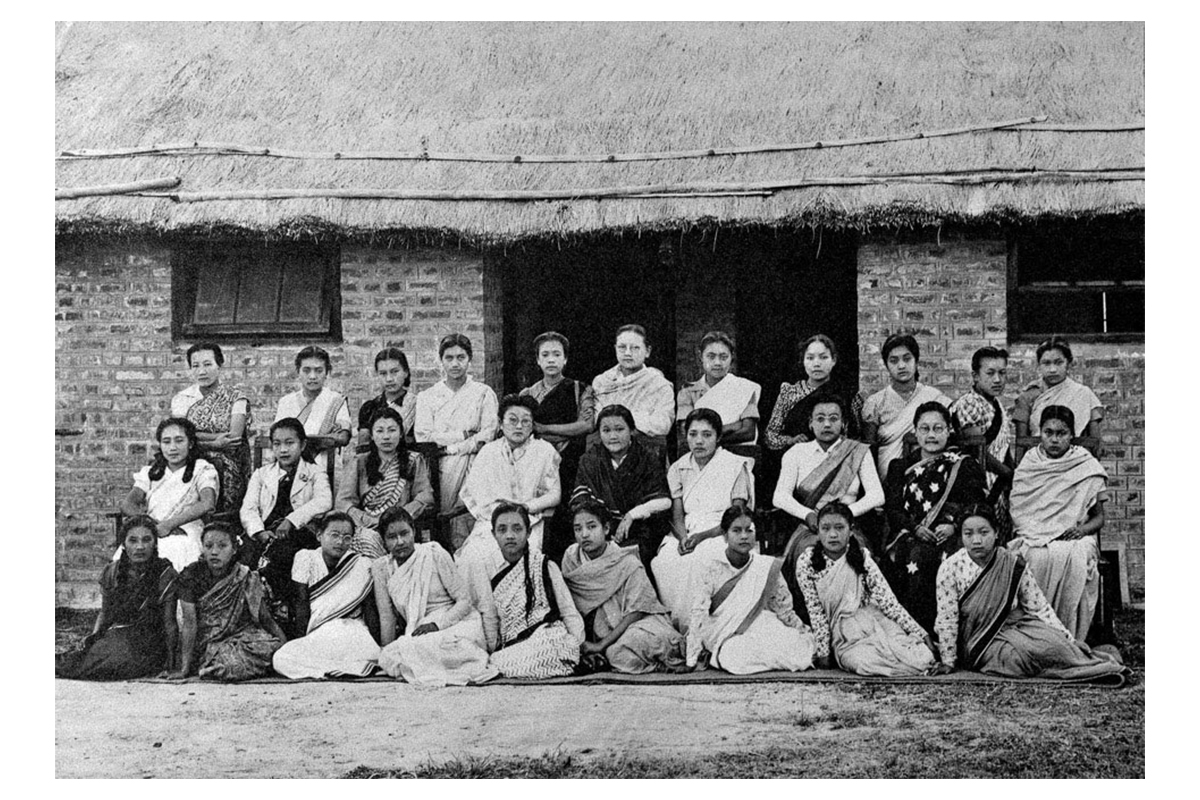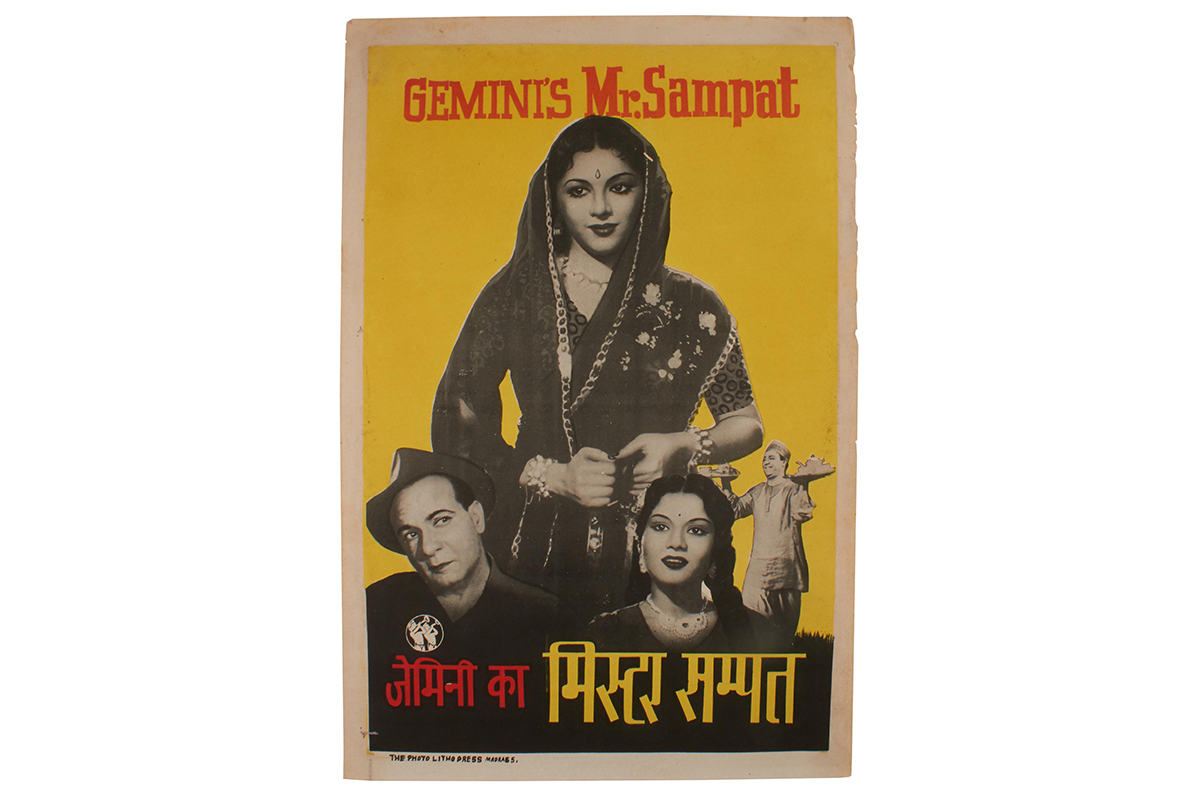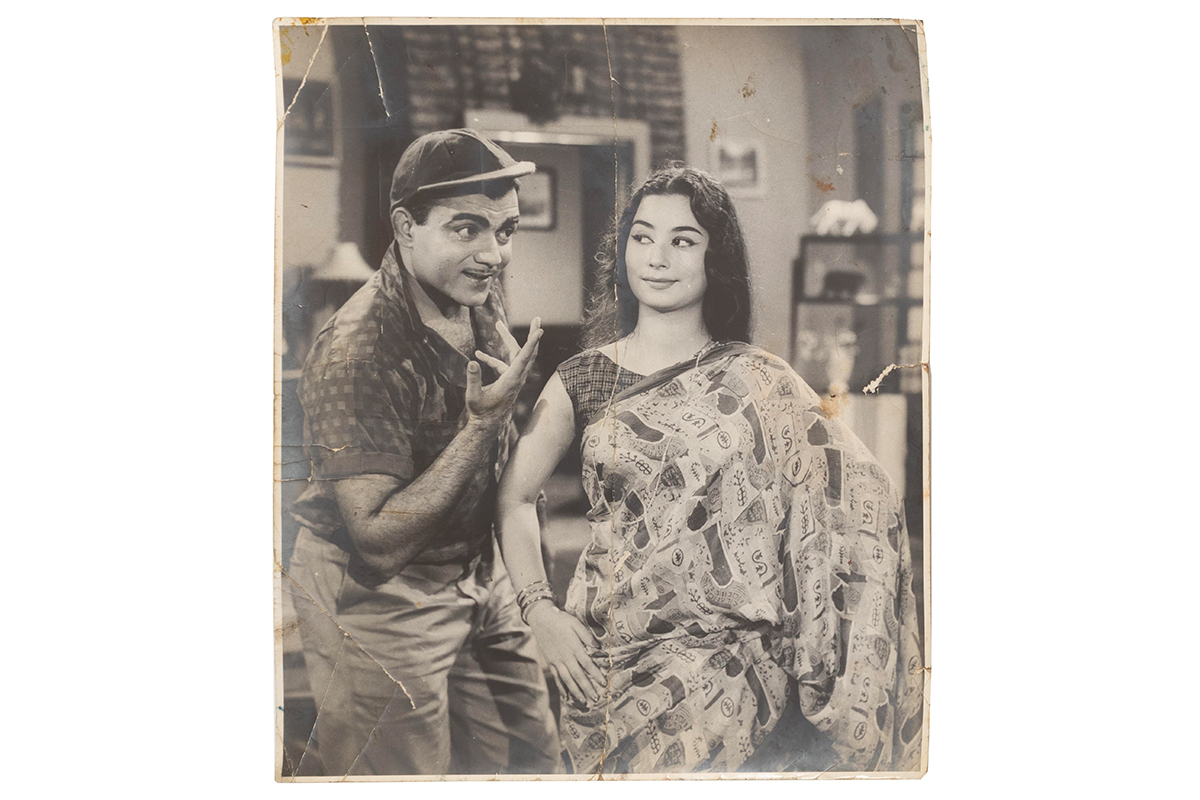One of the most common drapes of the saree, the Nivi drape is a popular pan-India style whose name derives from “nivi” meaning “new.” It requires a blouse, a petticoat and a saree that is at least six yards in length. In this drape, one corner of the saree is tucked into the petticoat and the rest is wrapped around the body, carefully pleated and tucked into the front, while the remainder of the fabric is thrown over the left shoulder in the form of a pallu.
The earliest references to the Nivi drape date back to the Vedic period. An eighth century literary text, Haribhadra’s Samaraiccakaha, describes a woman dressing up in a “nivi sari.” The frescoes of the Ajanta Caves also showcase drapes that are reminiscent of the Nivi drape and feature front pleats. Some theories attribute the Nivi drape to the Dravidas, noting its similarities to the veshti worn in South India, which also involved the pleating and tucking of fabric at the navel. Furthermore, the lower garment commonly worn by women in this period was called the nivi or the nivi bandha, supporting the theory that the Nivi drape originated in Andhra Pradesh.
Other scholars have credited the invention of the contemporary Nivi drape to Jnanadanandini Devi, wife of Satyendranath Tagore, the elder brother of writer Rabindranath Tagore. In Bengal, sarees were traditionally worn without a blouse or a petticoat. In 1964, however, Devi relocated to Bombay (now Mumbai), where such a style was considered unsuitable for public use, forcing her to wear tailored dresses that mimicked a draped saree. After noticing the way Parsi women in Bombay wore sarees at the time – with a blouse and petticoat, and the pallu draped over the right shoulder – she was inspired to adopt what is now known as the Nivi drape. She shifted the pallu from the right to the left shoulder in order to use her right arm freely, consequently increasing the length of her sarees from the traditional five-yards to almost six yards, which remains the standard saree length today. In Calcutta (now Kolkata), this style came to be known as the Bombay Dastur and became popular across the city owing to Devi’s willingness to teach this drape to other women.




